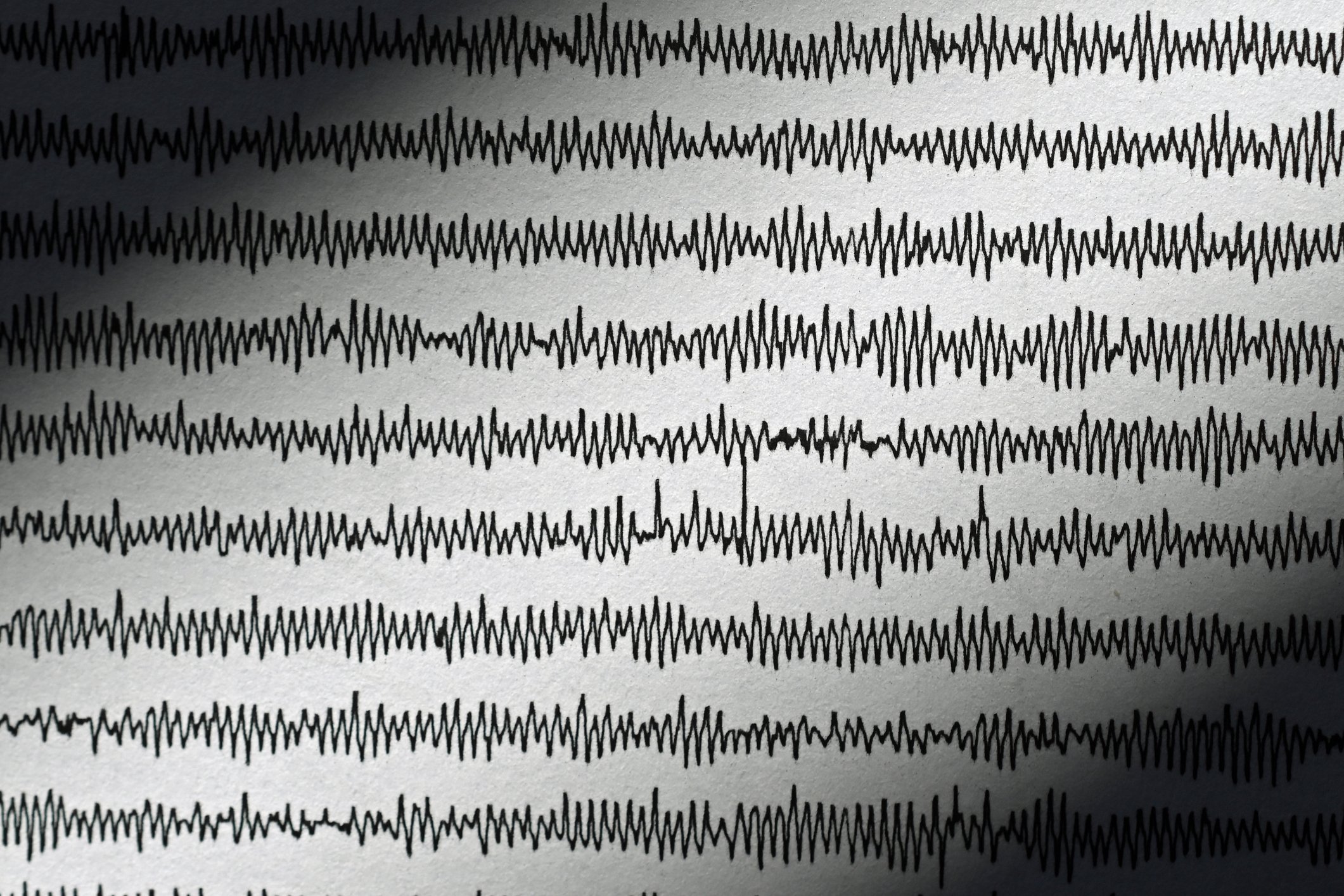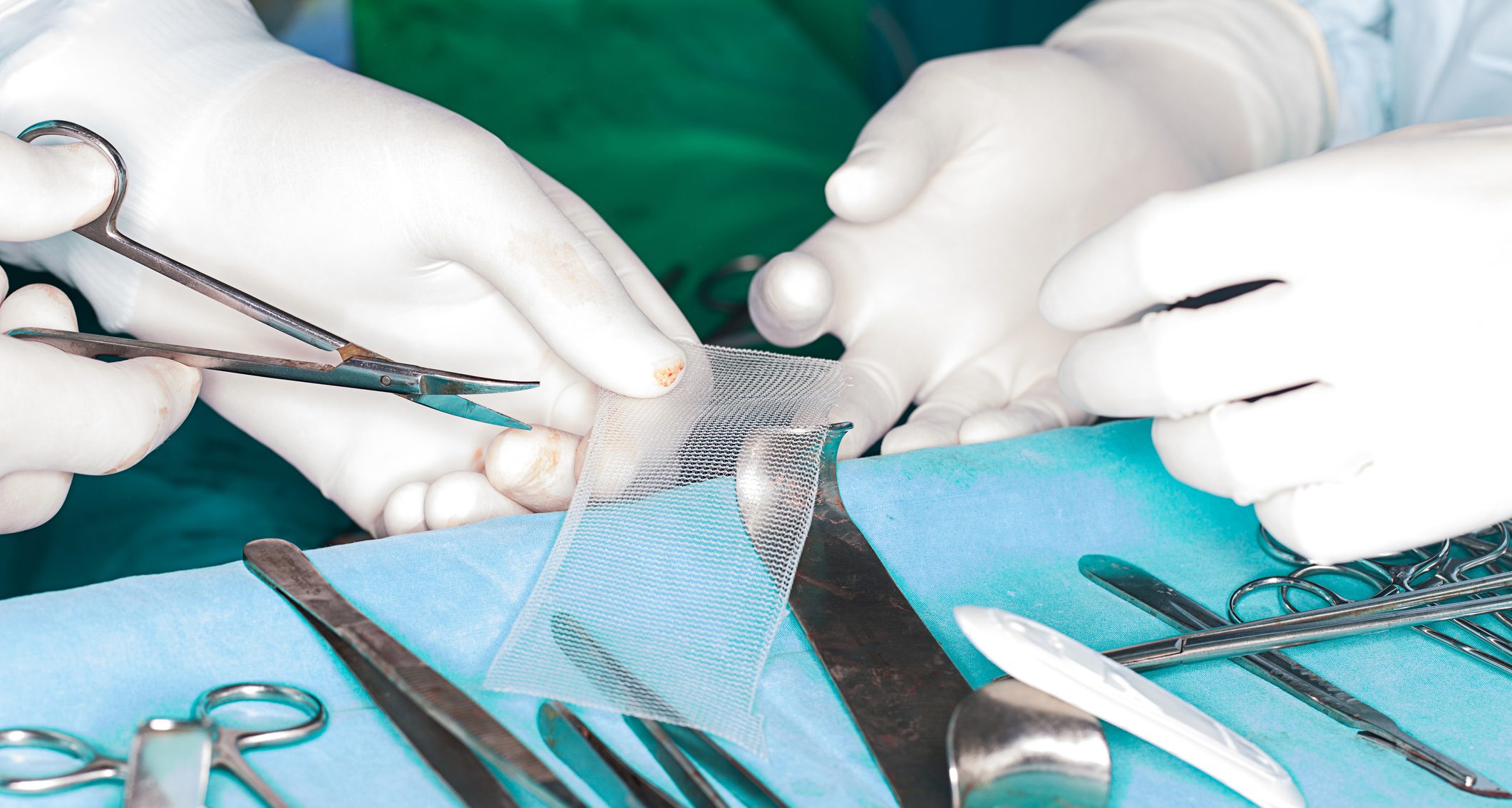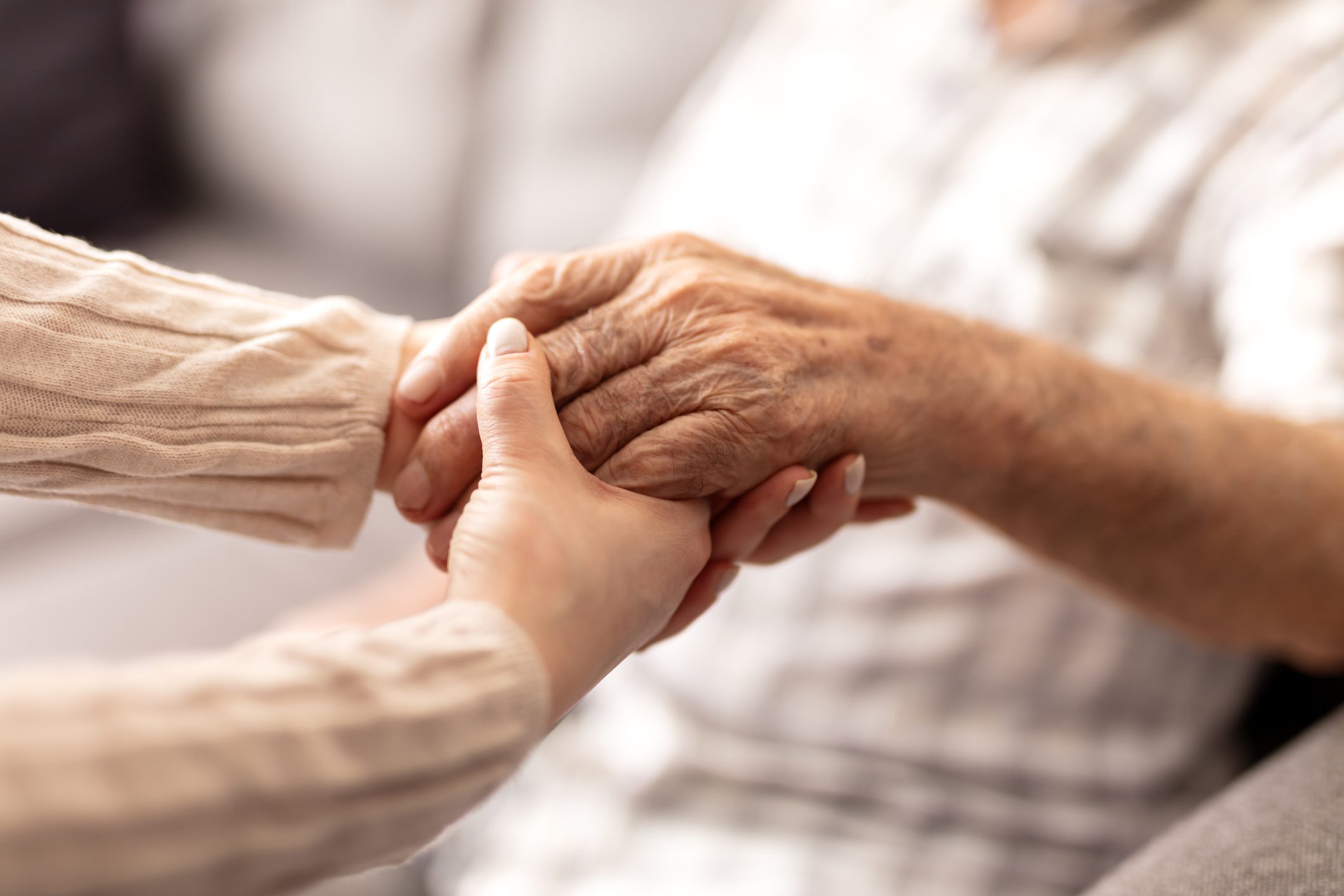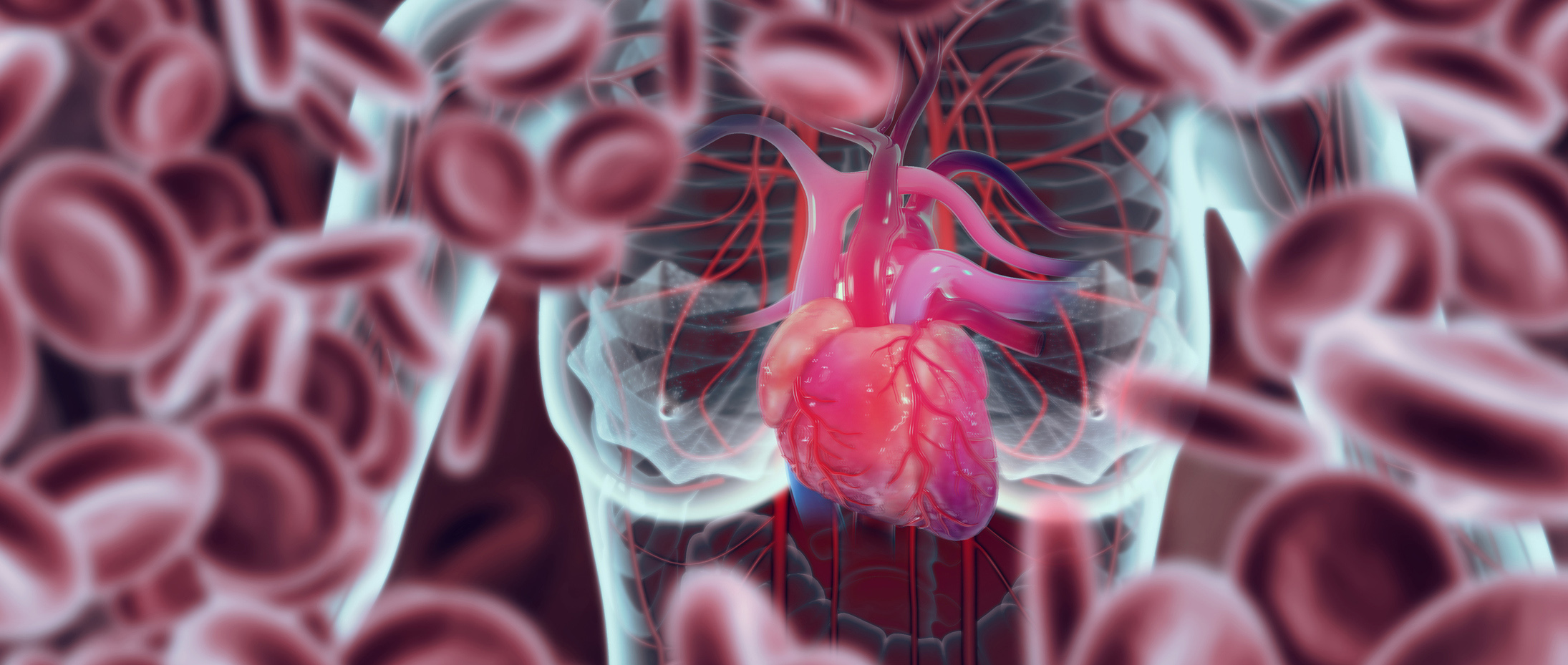The lower eyelid presents a particular challenge for aesthetic treatment. PRP is a fast, minimally invasive therapy with few side effects in this area. The patient population accepts the autologous “natural” procedure well.
The region around the eye, especially the lower eyelid, is one of the most delicate areas of the face. Anatomically, two main problems await us in the lower eyelid: First, it is a very thin skin (a circumstance that increases with age) with little underlying structure. The blood vessels shimmer through, which can manifest as bluish-dark circles under the eyes. On the other hand, the skin here increasingly loses elasticity and slackens (cutis laxa).
Thus, there is not primarily a volume or wrinkle problem, but rather a regeneration problem, which requires regenerative treatment (improvement of blood circulation/skin structure, stimulation of collagen synthesis).
Possibilities and limitations of different aesthetic therapies
One conceivable approach due to the anatomical changes is the administration of volume via hyaluronic acid. Here, on the one hand, it is important to choose the appropriate hyaluronic acid (products specifically designed for this purpose), and on the other hand, to be careful not to overcorrect. This may result in excess fluid being absorbed, which leads to the exact opposite of the desired effect. The therapeutic approach to this localization is possible in principle, but it is demanding and delicate, so it belongs to experienced specialized hands. As well as, for example, laser treatment in the lower eyelid area.
What works very well for crow’s feet is botulinum toxin. However, the lower eyelid is not accessible or the appropriate indication for this (it does not address thinning of the epidermis and sagging of the skin). In people with a tendency to swelling/tears bags, the appearance in question may even worsen in the short term during the treatment of crow’s feet (due to the lack of muscle activity, there is also no drainage of the lymph, the fluid stagnates). If the therapy is advanced towards the nose, there is also a risk of ectropion (outward tilting of the eyelid with consecutive tearing of the eye) in addition to bags under the eyes.
For microneedling, which is also a good regenerative treatment for other indications, the lower eyelid is anatomically difficult to access and too sensitive (pain). In addition, the risk of hematomas is increased at this location.
Surgical methods are an option especially in cases of cutis laxa and swelling. This involves the removal of excess skin and, if necessary, the aforementioned fat body. In experienced hands (mostly plastic surgeons and surgical ophthalmologists), the results are good. However, patient acceptance of such an intervention (which is also more costly) is limited. Today, demand is increasingly moving toward less invasive procedures with shorter downtime.
PRP as a useful therapeutic approach for the lower eyelid
The beginnings of PRP treatment are in orthopedics (e.g. revitalization of cartilage). In addition, it has long been used in wound treatment for wound healing. Other indications (for monotherapy or combination therapy) are general skin rejuvenation, striae distensae or androgenetic alopecia.
The growth factors and endogenous cytokines contained in platelets are particularly important for the regenerative effect. Among other things, these have an anti-inflammatory and proliferation-stimulating effect. It is essential to separate the PRP as gently but completely as possible from erythrocytes and leukocytes, otherwise there is a risk of undesirable effects due to proteases and free radicals. This is achieved by first drawing 10-15 ml of blood from the patient and then centrifuging it while standing vertically (ideally at 1500 rpm or 350 G for five minutes). Afterwards, the plasma is located in the upper approx. two-thirds of the syringe and a small amount of leukocytes and platelets immediately above the red blood cells (Fig. 1) . This method increases the concentration of platelets in plasma by a factor of 2.5 compared with whole blood.

To avoid contamination, a closed system with double syringe (ACP® double syringe from Arthrex) is suitable for reprocessing. After centrifugation, the PRP is drawn up with the inner plunger of the double syringe (Fig. 2). You then have about 3-5 ml of plasma (depending on the system). From the inner syringe, the PRP is drawn up again into fine syringes of approx. 1 ml each. After that, you can either put on a cannula to inject the plasma subcutaneously with one prick, or you can apply it subcutaneously with very fine needles with three to four pricks in the whole lower eyelid area (approx. 1-2 ml).

In order for the platelets to release the growth factors, they must be activated, e.g. with the addition of anticoagulants. However, the growth factors are very short-lived. When they are all released at once as part of an injection with an anticoagulant, it’s like having a lock and a thousand keys to it. Since platelets, when in contact with collagen fibers, are also activated (but via an endogenous, slow and continuous process), it is believed that a better effect is achieved. I personally do not add an anticoagulant. However, opinions differ on this topic.
The positive effect of PRP on the aging skin of the lower eyelid lies in the growth factors. These reactivate collagen synthesis, stimulate cell proliferation and angiogenesis. This improves elasticity and a volume effect occurs. In addition, PRP stimulates the degradation of damaged components of the extracellular matrix of aging skin (an effect probably due to better blood circulation). The body’s own hyaluronic acid synthesis is increased, which attracts fluid and also leads to more volume.
Own cases and experiences
My personal positive experience with PRP for the treatment of the lower eye region (Fig. 3) coincides with that of the ongoing study by PD Dr. med. Matthias Aust, who has already presented his positive treatment results at specialist congresses.
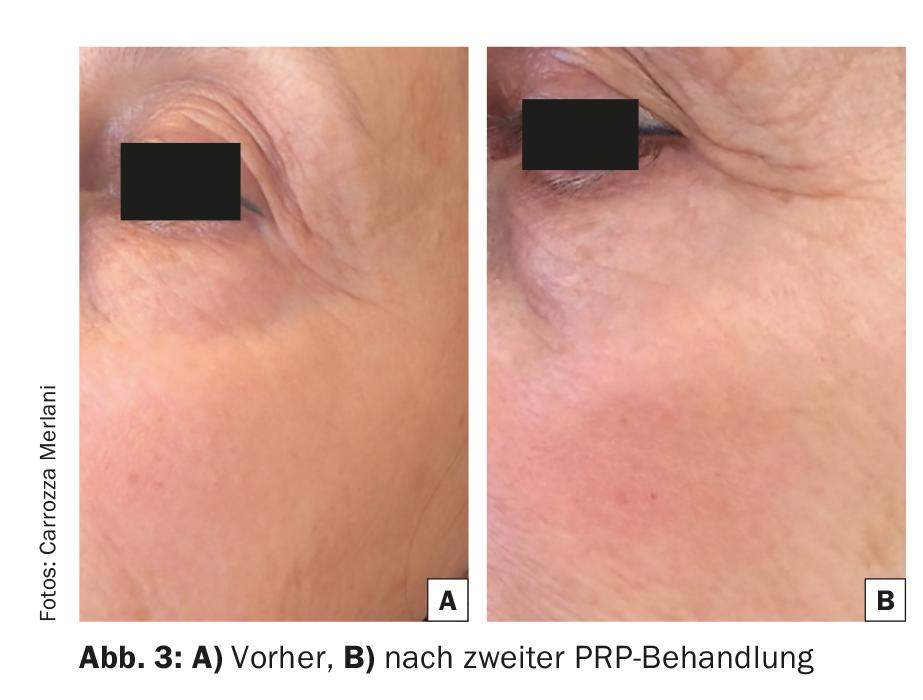
The regeneration process with the formation of new cells and fibers takes time, which is why patients should be accurately informed that they can expect the final result only four to six months after the end of therapy. Generally, one does three to four sessions at intervals of four weeks each.
Patient selection is critical (for safety, but also for optimal success) even with this “natural” therapeutic approach. There are of course contraindications or limited indications, these include:
- active tumor disease
- Pregnancy and breastfeeding
- Age under 18
- acute skin diseases and inflammations
- Platelet dysfunction
- Patients under anticoagulation or
- Antiplatelet therapy
- Infections.
Especially for such delicate localizations, PRP is a relatively easy to perform, low-risk and effective method that also involves comparatively little material expense. However, the prerequisites or the system are crucial. Optimal, complete and safe preparation of the plasma must be guaranteed. In addition, even with such autologous approaches, it must not be forgotten that a proper diagnosis and indication must be made before treatment. Not every patient with dark circles is automatically suitable for PRP treatment. Are the dark circles actually due to thinning of the epidermis, or is it perhaps more of an ethnicity-related hyperpigmentation (for which PRP has no effect)?
The acceptance of the approach on the part of the patients is high, although it is a therapy in the middle of the face (where no coverage is possible with a padder), which requires a high level of trust in the physician. After the treatment, which lasts about half an hour in total, the therapy area is slightly reddened and a slight swelling of the lower eyelids may occur over one or two days. The patient can go straight back to work (no actual downtime). It is important to compress and cool for about five minutes after the injection. Overmake-up is possible relatively quickly.
Due to the aforementioned shortcomings of some other aesthetic approaches, PRP may be a good choice to offer a minimally invasive, quick alternative with few side effects to those patients who were previously “fobbed off” with the advice to simply make up the dark circles (because they did not want a more invasive approach, for example).
Take-Home Messages
- The lower eyelid poses a special anatomical challenge for aesthetic treatment.
- For patients who desire the fastest, most minimally invasive therapy possible with minimal pain/side effects, PRP can be a good
- regenerative therapy option can be offered.
- Acceptance of the procedure on the part of the patient community is high.
- Even in the case of autologous “natural” approaches, a proper diagnosis and indication are of decisive importance. Suitable patients should be carefully selected and informed in advance about the expected effects and therapy periods.
DERMATOLOGIE PRAXIS 2017; 27(3): 30-32





